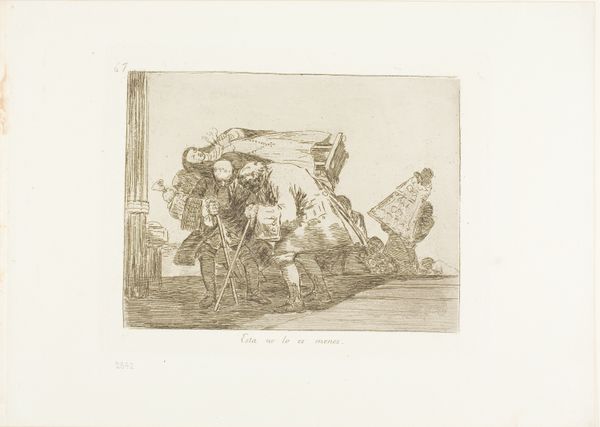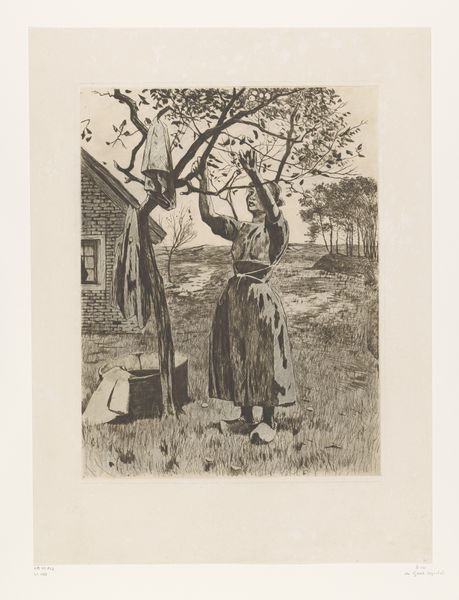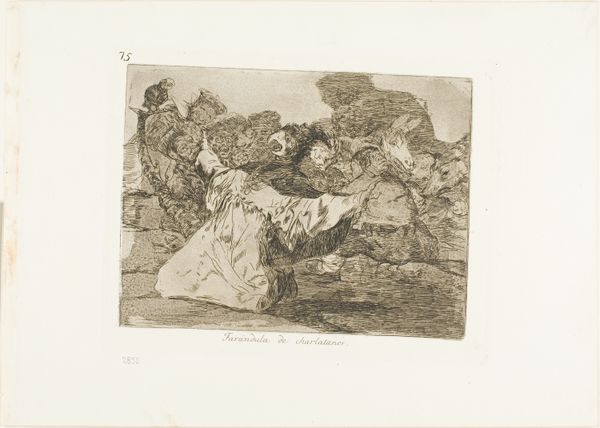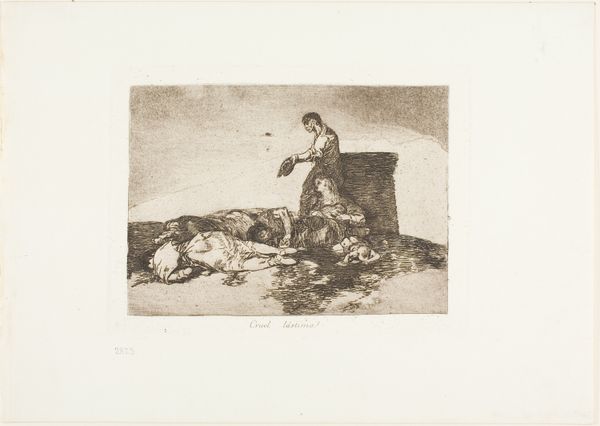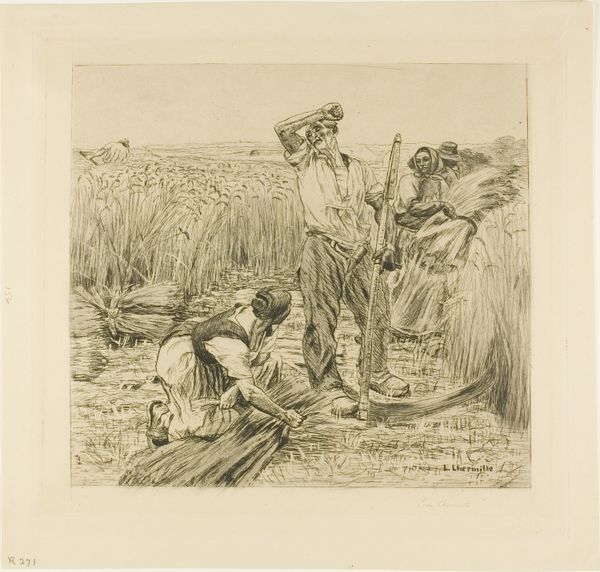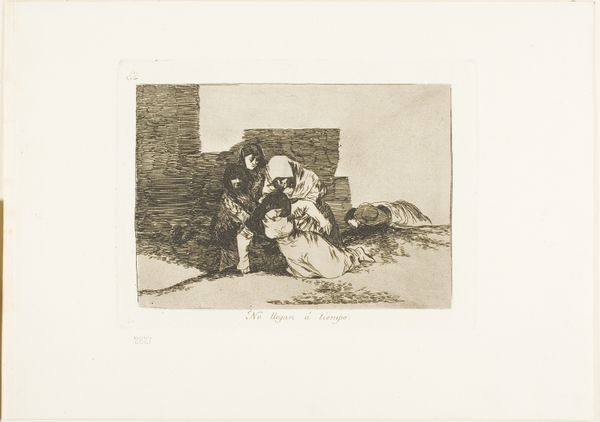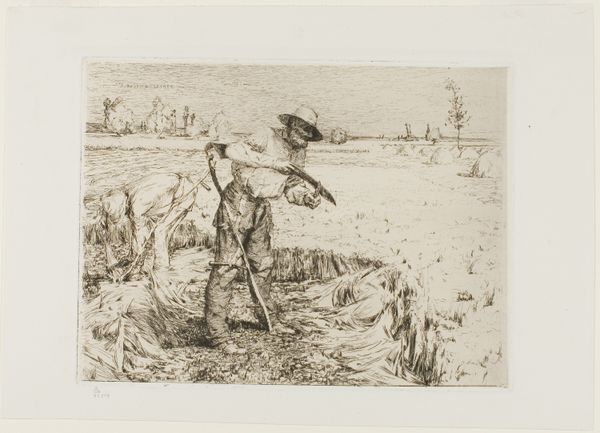
May the cord break, plate 77 from The Disasters of War Possibly 1815 - 1863
0:00
0:00
drawing, print, etching, paper
#
portrait
#
drawing
#
narrative-art
# print
#
etching
#
war
#
figuration
#
paper
#
romanticism
#
history-painting
Dimensions: 153 × 195 mm (image); 173 × 218 mm (plate); 240 × 340 mm (sheet)
Copyright: Public Domain
Editor: This is plate 77 from *The Disasters of War* series by Francisco de Goya, likely created between 1815 and 1863. The medium is etching on paper, and it’s titled “May the cord break.” It's incredibly unsettling; there's this figure teetering on a tightrope, a sea of faces below. How do you interpret the symbolism in this image? Curator: Indeed, a potent image. Notice the figure’s attire and posture; do they suggest someone of power or perhaps an entertainer? The tightrope, itself, symbolizes precariousness. Look at the expressions of the crowd – are they supportive or eager for a fall? The phrase "May the cord break" underscores a desire for disruption, a yearning to overturn an established order. It resonates deeply with Romantic ideals of rebellion and the instability of social structures following periods of war. The symbolism is very deliberate. Editor: The faces in the crowd are particularly striking; some seem hopeful, others almost gleeful. Is Goya suggesting the crowd’s complicity in potential disaster? Curator: Precisely! Consider the cultural memory Goya taps into here. Images of tightrope walkers were popular, but rarely charged with such overt political meaning. Goya masterfully utilizes this familiar imagery to speak to anxieties about leadership, societal collapse, and the volatile nature of public sentiment. The viewer is left to ponder if the potential fall represents a deserved downfall or a tragic loss of balance within the system. It holds the psychology of power within its frame. Editor: It's amazing how Goya could imbue such a simple scene with so much symbolic weight. Thanks, I never would have picked up on that! Curator: And I appreciate your insights. It's by interrogating familiar images that we begin to unearth the complex layers of cultural memory embedded within them. This piece shows us what we remember about power being a balancing act, so delicately presented.
Comments
No comments
Be the first to comment and join the conversation on the ultimate creative platform.

